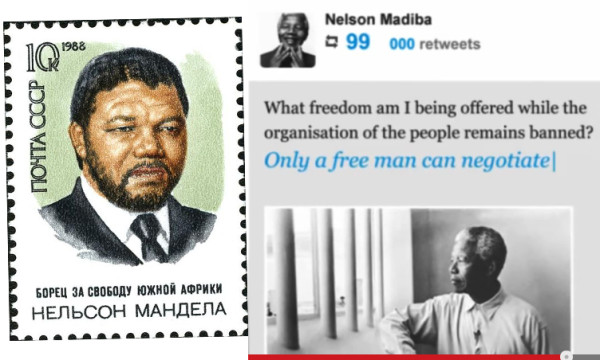The eclectic bunch of mourners eulogising the undoubtedly great African hero showed an interesting phenomenon. Even those who had had him in the terrorist list (till 2008) were there to pay tribute. Was that hypocrisy or a change of heart in the face of the man’s outstanding achievements? Only each of those people’s consciences can answer such question.
But for others it was easy. Mandela started with nonviolence, and went back to it as soon as he considered it a possible strategy. He upheld Gandhian principles and declared it his preferred option to end the apartheid regime. Only the presence of massacres and the apparent hopelessness of the situation made him abandon the path of nonviolence, most probably with heavy heart.
Of all the strategies used to end apartheid my favourite is what I call ‘the Mandela paradox’. He was offered at different stages to be let out of prison if he broke ties with the Communist Party, but most importantly if he renounced violence, supposing if he did the whole of the ANC would follow suit. Mandela said no, “only a free person can enter into a contract.” This is passive resistance at its most refined, one of the highest moral tactics in the methodology of nonviolence. It was used also by Aung San Suu Kyi to whom the Burmese military regime offered to set her free if she left the country. She stayed and endured in total about 15 years of house arrest. But the beauty of the Mandela paradox is that he used nonviolence by refusing to renounce violence, something like in science fiction giving an evil robot a non computable problem that ultimately makes it implode.
The advocates of violence have, of course, underlined that Mandela embraced sabotage and also saw armed struggle as a valuable strategy when peaceful means fail. The battle of Cuito Cuanavale, in south-eastern Angola, between the armed forces of apartheid South Africa against the Cuban army and Angolan forces has been claimed as a victory by both sides. But for Mandela it “was the turning point for the liberation of our continent—and of my people—from the scourge of apartheid”. Perhaps from a nonviolent point of view it could be said that one of the problems facing South Africa today is precisely the aftermath of a violent struggle. It is not so easy to establish a nonviolent regime when only violence is seen as an effective force for change.
Trying to identify the “turning point” in the battle against apartheid as an individual event is also problematic, because the struggle to end the most racist regime on earth had so many strands. The film Endgame, describes events that took place towards the end of apartheid. “A British mining concern called Consolidated Gold is convinced that their interests would be better served in a stable South Africa, and they quietly dispatch Michael Young, their head of public affairs, to open an unofficial dialogue between the bitter rivals. Assembling a reluctant yet brilliant team to pave the way to reconciliation by confronting obstacles that initially seem insurmountable, Young places his trust in ANC leader Thabo Mbeki and Afrikaaner philosophy professor Willie Esterhuyse. It is their empathy that will ultimately serve as the catalyst for change by proving more powerful than the terrorist bombs that threaten to disrupt the peaceful dialogue.” (From the film’s blurb) The film, and the book, stress the process of humanisation that takes place between people who have thoroughly objectified each other as the “enemy” in the past. It is a jewel in any nonviolence process. But of course it could be noted that the final objective was to make the transition to majority rule without damaging the company’s interests.
Here we encounter another difficulty in this transition, it ended the regime but it did not create the economic changes that would end poverty for most of the black population. Mandela has been accused of abandoning his socialist leanings in favour of allowing neoliberalism to deepen its hold on South Africa. If this was a bargaining strategy to avoid a blood bath, engaging in progressive transformation rather than a revolution, we must note that as unsatisfactory as it may appear to many marginalised South Africans, saving so many lives that would have been lost in an all out battle has to have been an important consideration.
During a London demo I heard a group of face-covered youths chanting “What do we want? Revolution! When do we want it? Now!” to which another group was responding, “What do we want? Gradual change. When do we want it? In due course!”
Mandela may have been aware also of the “Akhenaton syndrome” as many times radical changes are reversed when the person carrying out the reforms disappears.
For many Mandela’s funeral was an opportunity to do things that were unthinkable within the rigid over-planned diplomatic protocol. Obama shook Raul Castro’s hand and took photo “selfies” thanks to new phone technology.
The translator for the deaf turned out to be unsuitable, perhaps even mentally ill and not making any intelligible gestures, and computer buffs made a video of what Mandela’s reporting would have been if he had lived more around the times of social media.
International sanctions did have an effect in ending apartheid, sports and academic boycotts also helped, and the promise of Ubuntu’s Truth and Reconciliation rather than Hammurabi/Hollywood Revenge humanised all sides. We should be grateful for his long life amongst us for he gave us the best example, not because he won, but because he never stopped trying.






